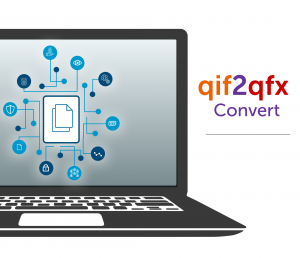The Rules of Thumb blog from MoneyThumb makes it our business to keep our readers informed on important issues. The urgent issue the whole world is concerned about right now is the Coronavirus. Not only is this deadly virus making people sick, many dying worldwide, but the need for social distancing and the directive from governments to close businesses is also very adversely affecting the economy.
In an effort to recover the American economy, the U.S. government, after much back and forth debate, has approved a $2.2 trillion economic stimulus package. Below is a complete review of what all the stimulus package contains. We don't get into politics on the Rules of Thumb blog, so we had a hard time finding a thorough review of the package that didn't include bipartisan opinion. In fact, the best coverage of the U.S. economic stimulus package we found that did not also contain political opinion comes from the website of the NAHB, (National Association of Home Builders!) A big thank you to the NAHB for this very thorough article.
The MoneyThumb team would really appreciate it if you shared this blog post with your peers on social media. That way everyone can thoroughly understand what the $2.2 trillion U.S. economic stimulus package contains and how it will affect them, their families, and/or their business.
The Coronavirus Aid, Relief, and Economic Security (CARES) Act includes several provisions to help small businesses and those engaged in the residential construction sector.
The House is expected to approve the bill on Friday morning and President Trump said he will sign the bill immediately.
At the top level, the CARES Act would:
- Make direct payments of $1,200 to most individuals earning up to $75,000, or $2,400 for couples earning up to $150,000. The amount decreases for individuals making more than $75,000 and payments cut off for those earning above $99,000.
- Provide an additional $367 billion in loans for small businesses to help deal with payroll issues.
- Create a $500 billion lending program for larger companies, including airlines, as well as states and cities.
- Establish an oversight board and inspector general to oversee loans to large companies.
- Provide $130 billion for hospitals.
- Earmark $150 billion for state and local governments.
Here are more details of how this aid package would help members of the small business community and housing sector:
Small Business
Small business owners in all U.S. states and territories are currently eligible to apply for low-interest Economic Injury Disaster Loans (EIDL) of up to $2 million that can provide vital economic support to help overcome the temporary loss of revenue due to the COVID-19 response. Applicants may request an advance in the amount of $10,000 to be delivered within three days of the request. This advance must be used to:
- Provide sick leave to employees unable to work due to the effects of COVID-19;
- Maintain payroll to retain employees;
- Cover increased costs of materials due to interrupted supply chains;
- Make rent or mortgage payments; or
- Repay other obligations that cannot be met due to revenue losses.
An applicant will not be required to repay this advance if it is used for these purposes, even if they are subsequently denied a loan under the EIDL program. Qualified businesses can apply online at disasterloan.sba.gov/ela/. For application assistance, please contact an SBA customer service representative at 1-800-659-2955 or email disastercustomerservice@sba.gov.
Small and medium-sized businesses (with fewer than 500 employees) are also eligible to apply for SBA’s expanded 7(a) loan program. This program is not provided through SBA directly, so the first step to qualifying for a 7(a) loan is to find an SBA approved lender in your community. Your lender can guide you through the application process and determine which 7(a) loan product will work best for your business.
Allowable uses of these loans include:
- Payroll costs;
- Certain costs related to the continuation of group health care benefits;
- Employee salaries (including commissions);
- Mortgage, rent and utility payments; and
- Interest on any other debt obligations that were incurred before the covered period.
A loan recipient may be eligible for forgiveness on a covered loan used for costs including payroll, mortgage and rent obligations, and utility payments.
If you have questions about the 7(a) loan program, you can contact the SBA at 1-877-475-2435 or email 7aquestions@sba.gov. If you are having issues with the EIDL or 7(a) loan application process or if your application was denied, please contact Alex Strong at NAHB at 1-800-368-5242 x8279 or Heather Voorman at 1-800-368-5242 x8425.
Tax
The CARES Act provides a number of tax provisions aimed at providing financial relief to most American taxpayers as well as new tools to aid struggling businesses. The centerpiece of the bill is a $1,200 “recovery rebate” that will be distributed to all eligible Americans. But the bill also includes needed tax relief to small businesses, including an employee retention tax credit; the ability to delay certain payroll tax payments; providing advance refunds of the new sick and medical leave tax credits, and relaxing rules related to net operating losses.
More detail is provided below.
***NOTE: NAHB is providing this information for general information only. This information does not constitute the provision of legal advice, tax advice, accounting services, investment advice, or professional consulting of any kind nor should it be construed as such.***
New Tax Benefits for Individuals
Recovery Rebates: The tax-related centerpiece of the third economic stimulus bill consists of “recovery rebates” — a $1,200 one-time payment (plus $500 per child) — mailed (or direct deposited) to every eligible taxpayer in the coming weeks.
- Eligible recipients include taxpayers with adjusted gross income up to $75,000 (single)/$112,500 (head of household)/$150,000 (joint filers). Joint filers will receive $2,400.
- The rebate is phased out for taxpayers with higher incomes and is completely phased out for single filers, heads of household, and joint filers with incomes above $99,000, $136,500, and $198,000, respectively.
- All eligible taxpayers will receive a check, which will be processed automatically based on the taxpayers’ 2019 tax returns. If the taxpayer has not yet filed a 2019 tax return, the IRS will use their 2018 tax return.
- This is structured as a tax credit that is refunded in advance. Taxpayers will have to account next year for any “recovery rebate” on their 2020 tax returns.
Waived Penalties for Early, Coronavirus-Related Withdrawals from Retirement Funds: Taxpayers will not have to pay the 10% early withdrawal penalty for distributions up to $100,000 from qualified retirement accounts.
- Taxpayers would have three years to pay taxes on income from such a distribution, and
- The taxpayer may recontribute the funds to an eligible retirement plan within three years without regard to that year’s cap on contributions.
- This provision is only applicable for coronavirus-related purposes. To qualify, the taxpayer must:
- Be diagnosed with COVID-19;
- Have a spouse or dependent diagnosed with COVID-19; or
- Experience adverse financial consequences as a result of:
- Being quarantined, furloughed, laid off, having work hours reduced;
- Being unable to work due to COVID-19 related child care issues;
- Closing or reducing hours of a business operated by the taxpayer; or
- Other factors as determined by the Secretary of Treasury.
Temporary Waiver for Required Minimum Distribution Rules for Certain Retirement Accounts: For 2020, this waives the required minimum distribution rules for certain defined contribution plans and individual retirement accounts.
Partial Above-the-line Deduction for Charitable Contributions: Non-itemizing taxpayers would be eligible for a deduction up to $300 for cash contributions to churches and certain other charitable organizations. This applies to contributions made in 2020 and becomes a permanent feature of the tax code for subsequent years.
New Tax Benefits for Individuals and Corporations
Temporary Increase in Limits on Charitable Deductions: Prior to the CARES Act, individuals and corporations could only deduct charitable contributions up to 50% (individuals) or 10% (corporations) of their adjusted gross income (AGI). To encourage charitable giving in 2020:
- The individual deduction limit is suspended.
- For corporations, the limit is increased to 25% of adjusted gross income
New Tax Benefits for Businesses
Employee Retention Credit: Eligible employers are allowed a credit equal to 50% of qualified wages with respect to each employee, on a quarterly basis. An eligible employer means any employer carrying on a trade or business in 2020 during which in any calendar quarter:
- The operation of the trade or business is fully or partially suspended during the appropriate calendar quarter due to orders from an appropriate governmental authority limiting commerce, travel, or group meetings due to COVID-19; or
- The trade or business experiences a significant decline in gross receipts, with a 50% decline in gross receipts when compared to the same quarter in the prior year. Businesses remain eligible until their gross receipts recover to 80% when compared to the same quarter in the previous year.
- Maximum wages, including health insurance benefits, eligible for the credit for all calendar quarters is $10,000
- For businesses with 100 or fewer employees, generally, all wages of full-time employees are eligible.
- For larger businesses, only those wages paid to full-time employees who are not providing services due to a suspension of business operations or reduction in gross receipts are eligible.
- Wages may also include an employer’s qualified health plan expenses allocable to the employee.
- 501 (c) tax-exempt organizations are eligible.
- Employers receiving a loan under section 7(a) of the Small Business Act are not eligible for the employee retention credit.
- Credit is refundable to the extent it exceeds payroll taxes.
Delay of Employer-Paid Payroll Tax Payments: Employers and self-employed individuals may defer payment of the employer share of Social Security taxes they are responsible for paying.
- This allows employers and self-employed to save temporarily on the 6.2% Social Security tax on wages.
- These deferred taxes must be repaid over the following two years.
- Half of the amount will be due by Dec. 31, 2021, and the other half by Dec. 31, 2022.
Advanced Refunding of Sick and Medical Leave Credit: Under the Family First Coronavirus Response Act, employers are required to provide paid sick leave and paid family and medical leave under specific circumstances resulting from COVID-19. The law created new tax credits to offset the employer's cost of providing this leave. This bill will allow employers to quickly claim credits to reduce financial strain from this new mandate.
Net Operating Loss (NOL) Modifications: For income tax purposes, NOLs arise when allowable deductions of a business exceed their taxable income. Under current law, businesses can carry forward NOLs indefinitely to offset against future taxable income, but losses may not exceed 80% of taxable income in any tax period. NOLs may no longer be carried back and used to offset tax liability in prior years.
- Under this bill, losses from 2018, 2019 and 2020 may be carried back five years from the year in which the loss was incurred.
- This will allow businesses with NOLs to amend prior-year tax returns and obtain refunds to provide additional liquidity.
- The bill also repeals the 80% of income limitation so that NOLs from 2018, 2019 and 2020 may be carried forward to fully offset taxable income in years after the loss.
Modifications on Limitation of Business Interest: For businesses subject to the 30% of income limitation on deducting business interest expenses, the bill increases the limit to 50% for 2019 and 2020.
Banking
The Senate coronavirus economic stimulus bill would provide small community banks with several targeted regulatory relief measures aimed at ensuring that these critical lending institutions for the residential home construction industry continue to keep credit flowing during the COVID-19 crisis.
The legislation would:
- Allow the Federal Deposit Insurance Corporation to fully guarantee business transaction accounts and provide banks with additional flexibility and streamlined capital requirements to ensure liquidity during the crisis.
- Permit banks to postpone compliance with the Current Expected Credit Losses (CECL) standard, which requires lenders to immediately account for potential losses when they issue loans, potentially tying up much-needed capital.
- Encourage all financial institutions to work with borrowers to modify or restructure existing loans, including forbearance arrangements, interest rate modifications, repayment plans and any other similar arrangements that defer or delay the payment of principal or interest before borrowers are experiencing payment difficulties. The bill would suspend accounting rules so such modifications would not be categorized as troubled debt restructurings.
Single-Family Mortgage Relief:
- The Senate bill would permit anyone with a loan backed by Fannie Mae, Freddie Mac, FHA, VA or Rural Housing to receive forbearance up to one year on their mortgage by calling their servicer and reporting that they have a COVID-19 related financial hardship.
- The Senate bill also temporarily bars foreclosures on government-backed mortgages for not less than 60 days beginning March 18, 2020.
- Finally, the Senate bill gives credit scoring relief to those impacted by the COVID-19 crisis, including those taking advantage of government forbearance programs.
Multifamily
The CARES Act includes multifamily mortgage forbearance for all federally backed mortgages (Fannie Mae, Freddie Mac or FHA). Owners may request forbearance for 30 days, with the option of two additional 30 days as needed for a total of 90 days. During that time frame, (by the end of the termination of the national emergency or Dec. 31, 2020, whichever comes first) owners will be unable to evict tenants or charge late fees.
The legislation also calls for an immediate 120-day moratorium on evictions and associated fees for non-payment of rent for all properties insured, guaranteed, supplemented, protected or assisted in any way by HUD, Fannie Mae, Freddie Mac, the rural housing voucher program, or the Violence Against Women Act. After the 120 days, owners must give 30 days written notice of eviction. The eviction is specifically only for non-payment. At the end of this period, the tenants will be required to pay all rent due.
Appropriation Supplement:
- Tenant-Based Rental Assistance (Housing Choice Vouchers) — $1.25 billion. This will allow tenants who have had a significant loss of income apply for vouchers and it will assist the tenant in paying their rent in market-rate housing.
- Project-Based Rental Assistance (PBS8) — $1 billion. For multifamily developers who currently have PBS8 projects, this will provide additional funds to help maintain and run operations of these properties.
- Community Development Fund (CDBG) — $5 billion. CDBG is a flexible block grant program, commonly used by communities for a wide range of needs. CDBG is primarily used for activities that benefit low- and moderate-income individuals.
- Section 202 Housing for the Elderly — $50 million
- Section 811 Housing for those with disabilities — $15 million
- Homelessness Assistance Grants — $4 billion. This funding is for homeless individuals, shelters, and Public Housing Authorities (PHAs).
- Fair Housing Act initiatives — $2.5 million. Of this total, $1 million will go for education and outreach and $1.5 million is for enforcement.
There is no funding included for multifamily rural housing assistance.
Unemployment Provisions
The bill contains a significant expansion of unemployment benefits to support workers who have lost their jobs as a result of the COVID-19 health pandemic. Specifically, the measure:
- Creates a temporary Pandemic Unemployment Assistance (PUA) program to provide payment to those not traditionally eligible for unemployment benefits — such as the self-employed and independent contractors — who are unable to work as a direct result of the coronavirus pandemic. Payments through the PUA program are authorized for a maximum of 39 weeks, ending Dec. 31, 2020. This will be a huge economic relief to a large segment of NAHB’s membership.
- Extends traditional unemployment insurance (UI) benefits for another 13 weeks and provides for an additional $600 per week for each recipient of traditional UI or PUA for up to four months.
- Authorizes federal funds to cover the usual one-week waiting period before an individual gets their first unemployment benefits so that they can start receiving payments immediately.
- Funds short-term compensation (STC) programs and allows states to create new programs for employers that are having to choose between laying off or furloughing their employees to receive funding to keep those workers on their payroll. The STC program funding will be available for coverage of weeks of unemployment through December 31, 2020. Temporary, seasonal or intermittent workers are not eligible for those types of benefits.
- Authorizes payments to states to reimburse government agencies, tribes and nonprofits for half the payments they are required to make into the state unemployment fund.
Paid Leave
The bill includes some limiting language on the paid leave provisions in the second coronavirus bill. These include an explicit limitation on the weekly and total amounts that can be paid to a worker for sick leave and family leave related to the COVID-19 health pandemic.
Further, the bill extends access to paid family and medical leave for an employee who was laid off by an employer March 1, 2020, or later in certain instances if they are rehired by that employer. To be eligible, an employee would have had to work for the employer at least 30 days prior to being laid off.
The legislation also allows employers to receive an advance tax credit from Treasury for providing paid leave benefits instead of waiting to be reimbursed on the back-end. This will require a rulemaking or guidance to establish a process for how these advance tax credits can be issued to employers.





















Add comment